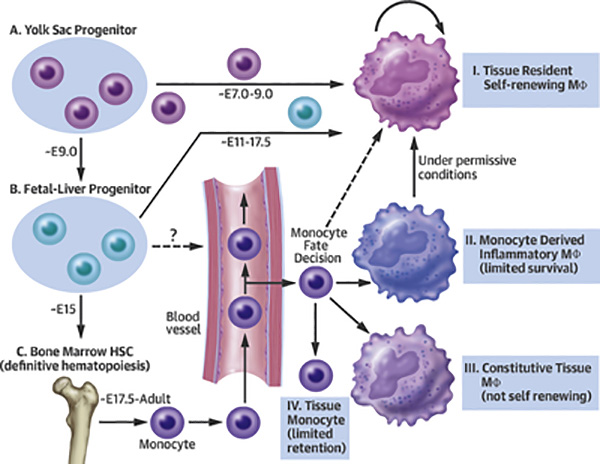Central Illustration. Macrophage developmental origin and maintenance.

Macrophages are seeded within tissues during discrete time periods of embryogenesis. These stages can been separated into three distinct origins, (A) yolk sac, (B) fetal liver, and (C) bone marrow. Each stage is capable of seeding tissue-resident macrophage populations, over the developmental time points shown. Over embryonic day E7.0–9.0 macrophages are seeded from yolk sac precursors, from ~E11–17.5 monocyte-like cells are capable of seeding macrophages from the fetal liver, and from ~E17.5 through adulthood mature monocytes from bone marrow are able to seed a variety of macrophage lineages in the tissues. Displayed are four types of macrophage populations that can be found in tissues during steady or diseased states; I. tissue resident macrophage, which are the primary macrophage population found in most tissues, II. monocyte-derived inflammatory macrophage, which are typically expanded during injury, III. constitutive tissue macrophages deriving exclusively from monocytes, without possessing the ability to proliferate in tissues, and IV. monocytes migrating through tissues. Mȹ = macrophage
